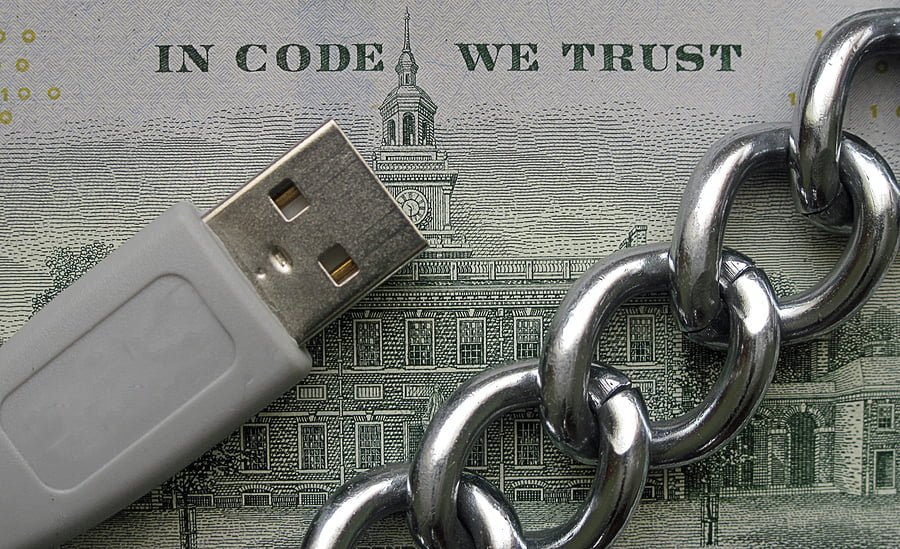How Cryptocurrency and Blockchain Technology Could Disrupt the Banking Industry
The world of finance has been one of the pillars society has been built upon since humans began to trade with one another, which in theory, if not in delivery, has barely changed in millennia. How then can cryptocurrency and blockchain technology challenge this status quo?
Table of Contents
ToggleWhat is Cryptocurrency and Blockchain Technology?
These terms have become part of the zeitgeist in the last couple of years as the media has jumped on stories of both its potential and its volatility, and smartphone apps, such as Coinbase, are making it extremely easy for beginners to get involved.
But what do they actually refer to?
Cryptocurrency is a form of digital currency which uses highly secure encryption techniques to verify the movement and generation of funds, without the need for a centralized system or third party – i.e. a bank – to handle the transaction.
Blockchain technology is essentially a decentralized and publicly available ledger of blocks of information and transactions formed into chains, using complex cryptography and verification procedures from multiple users, that cannot be edited or deleted without causing significant and noticeable disruption to the chain.
It’s blockchain technology which makes cryptocurrency transactions possible, although this is not its only application.
How is the Banking Industry Being Disrupted by This?
Banking systems are constantly evolving and having to move with the trends of the day, and they need to react to consumer needs.
A major area of the banking industry which could become disrupted by blockchain powered cryptocurrency is the facilitation of both receiving and sending payments. By effectively taking away the middle man required by traditional banking institutions to approve transactions, the path is forged for quicker transactions, with potentially lower costs.
The decentralized public ledger system that anyone can use to send or receive funds, effectively slashes a third of the entities required to carry out such a transaction, giving people from all corners of the globe access to a faster, cheaper, and potentially more secure payment system.
Aside from its cryptocurrency application, blockchain could also cause major disruption to the clearance and settlement of bank transfers. However, to understand how this could happen, we need to have a basic overview of how it works presently.
To transfer money from one institution to another, banks must search for an intermediary to carry out the transaction they both recognize and approve, incurring fees from the host bank, the receiving bank, and the intermediaries in the middle, not to mention the reconciliation of the ledgers at the end of each working day.
By cutting out superfluous intermediaries, the decentralized ledger system of an interbank blockchain could keep track of all transactions publicly and transparently. So, instead of having to maintain the logistical and financial burden of a network of corresponding banks, transactions could be reconciled almost instantly, from any point in the chain, using blockchain technology.
Disruption or Threat?
Blockchain certainly has the potential to significantly disrupt the world of banking as we know it, and those at the forefront of the industry are keen to increase its presence. However, what is also clear is the strategists and decision makers in the global banking market need to investigate whether these advances in technology could be a help rather than a hindrance.
Cryptocurrency and the blockchain technology which underpins it could offer the chance for an overhaul of the banking industry and its infrastructure, or at least an opportunity to implement some significant changes.
The shared public ledger system of blockchain, its speed of service, and the security provided by the fact it’s distributed across thousands of computers, along with its highly complex encryption systems and transparent nature, could help to modernize the banking industry, rather than disrupt it.
Smart contracts could also almost eliminate the need for extraneous agents to be involved in a transaction, by putting terms in place for contractual events (such as releasing a payment) to occur when certain criteria agreed by both parties are met – although there are still a few bugs to iron out.
It will take a lot of in-depth investigation, which is already being carried out, and the potentially large-scale rewriting of financial legislation, but blockchain and cryptocurrency could offer established financial institutions an opportunity to overhaul previously slow and outdated processes, and to streamline their business models to become more competitive, and offer improved services to their customers, in the future.
It remains to be seen whether cryptocurrency is the future of finance or a bubble waiting to burst. However, as we can already see blockchain technology being utilized in other industries to positive effect, there is every reason to believe it could provide a massive boon to the banking industry in one form or another.
Summary:
How Blockchain Disrupts Banking
How Cryptocurrency and Blockchain Technology Could Disrupt the Banking Industry: Cryptocurrency is a form of digital currency which uses highly secure encryption techniques to verify the movement and generation of funds, without the need for a centralized system or third party – i.e. a bank – to handle the transaction. Blockchain technology is essentially a decentralized and publicly available ledger of blocks of information and transactions formed into chains, using complex cryptography and verification procedures from multiple users, that cannot be edited or deleted without causing significant and noticeable disruption to the chain. It’s blockchain technology which makes cryptocurrency transactions possible, although this is not its only application. Aside from its cryptocurrency application, blockchain could also cause major disruption to the clearance and settlement of bank transfers. However, to understand how this could happen, we need to have a basic overview of how it works presently. The shared public ledger system of blockchain, its speed of service, and the security provided by the fact it’s distributed across thousands of computers, along with its highly complex encryption systems and transparent nature, could help to modernize the banking industry, rather than disrupt it.





